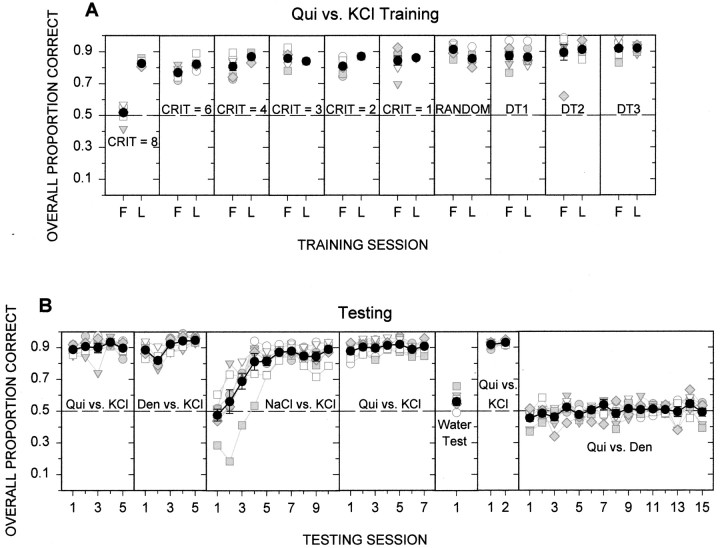Fig. 2.
A, Individual animal (gray and white symbols) and group mean (± SE; black circles and bars) data for rats initially trained in quinine versus KCl discrimination (group 1) are plotted across training phases. Performance on all trials with a lever press is depicted averaged across all stimuli in a session. To conserve space, only the first (F) and last (L) day of each training phase are shown. During training, some rats were tested for only 1 d on a given criterion; thus, last day means represent only animals that were tested for >1 d on the relevant criterion. It is clear that all of the animals learned the discrimination. B, Animals in group 1 were tested on a variety of taste discriminations, starting with the training stimuli (quinine vs KCl) followed by denatonium versus KCl, NaCl versus KCl, quinine versus KCl, water only, quinine versus KCl, and finally quinine versus denatonium. Note that the substitution of denatonium for quinine had no effect on performance, whereas substitution of NaCl for denatonium substantially disrupted performance initially, but the animals eventually learned the discrimination. Performance was severely disrupted when only water was used, as it was when animals were tested on the quinine versus denatonium discrimination. All rats were included in all testing sessions. Because individual differences in performance were generally slight there is substantial overlap in symbols, making them difficult to discern in some cases. Chance performance equaled 0.5.

